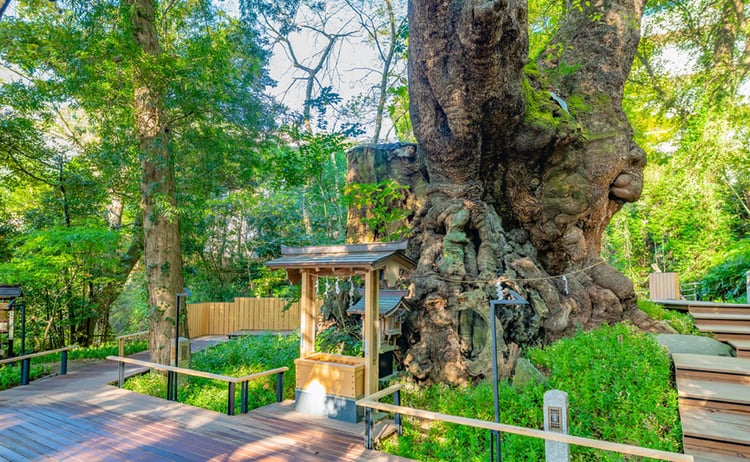Since ancient times the Kinomiya Jinja Shrine has been venerated for bringing good fortune and luck. The origin of the shrine is dated June 15, 710 (3rd year of the Wado Period), about 1,300 years ago. In Atami Bay, a fisherman unloaded his net and found what appeared to be the wooden statue of a deity inside. Upon which, Itakeru no Mikoto, one of the deities of the shrine and the god of trees and nature protection, appeared in the form of a child and prophesied, “There are seven camphor tree caves in this village where you cannot hear the sound of waves, so worship me there. Then I will protect the villagers as well as all comers.” It is said that the shrine was enshrined in its present location after it was found by the villagers. Since then, an annual festival has been held on June 15 of the lunar calendar (around July 15 every year) as a day to thank the gods for protecting the people living in and visiting Atami. It is also known as the “Kogashi Matsuri,” from the legend that mugikogashi (dried barley flour) was offered to the gods.
The shrine grounds are surrounded by nature with abundant greenery and water. Towering beside the main shrine is the sacred tree “Okusu,” which is also designated as a national natural monument. With its overwhelming presence and history dating back over 2,100 years, this giant tree is famous as one of Japan’s leading power spots. It is considered a symbol of “longevity” and “good health” because it has withstood natural disasters over a long period of time and continues to grow even today. Legend has it that circling the approximately 24-meter trunk will prolong one’s life by one year, and that if one makes a wish in one’s heart while circling the tree, that wish will come true. It still attracts many faithful followers as an object representative of a divine spirit.










